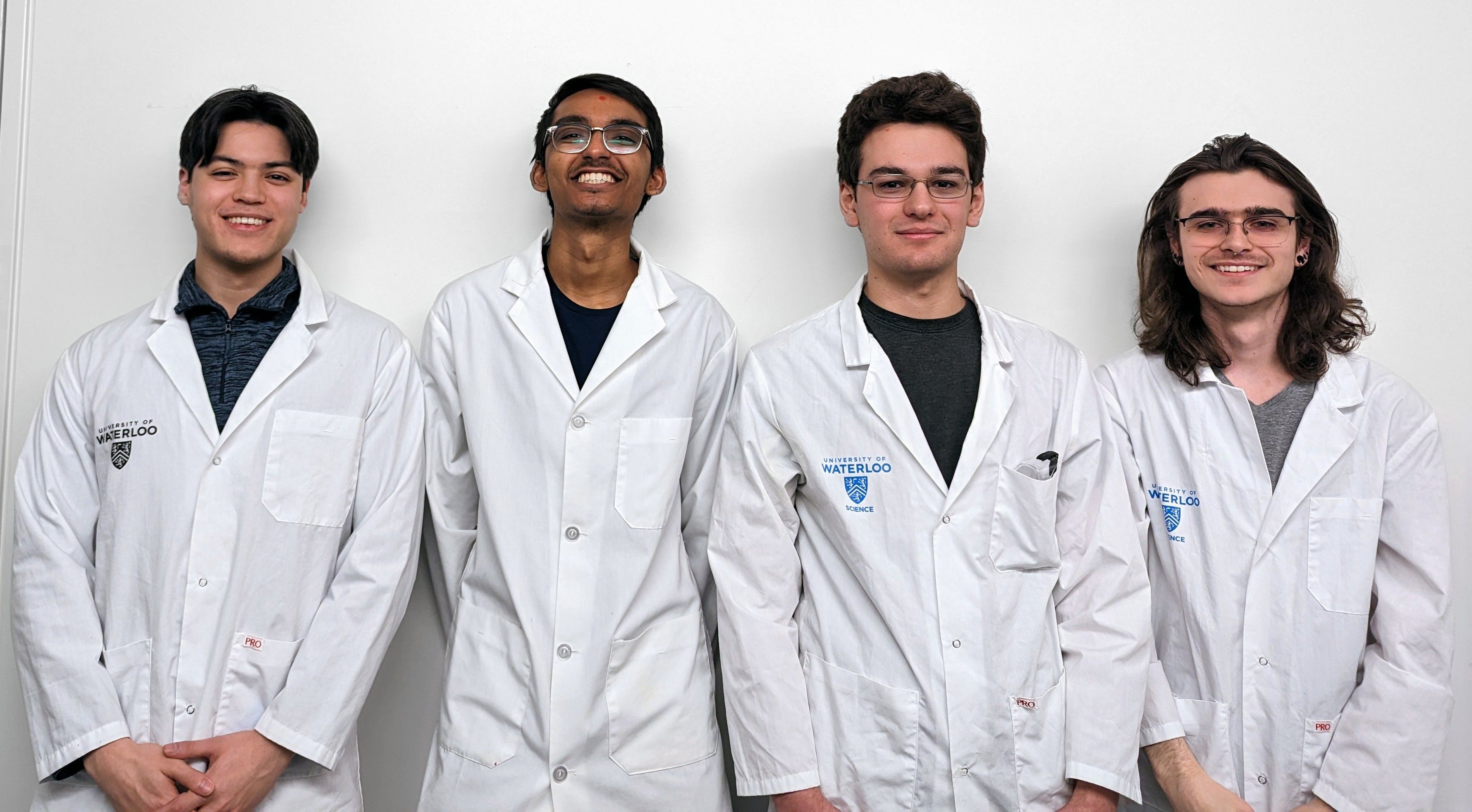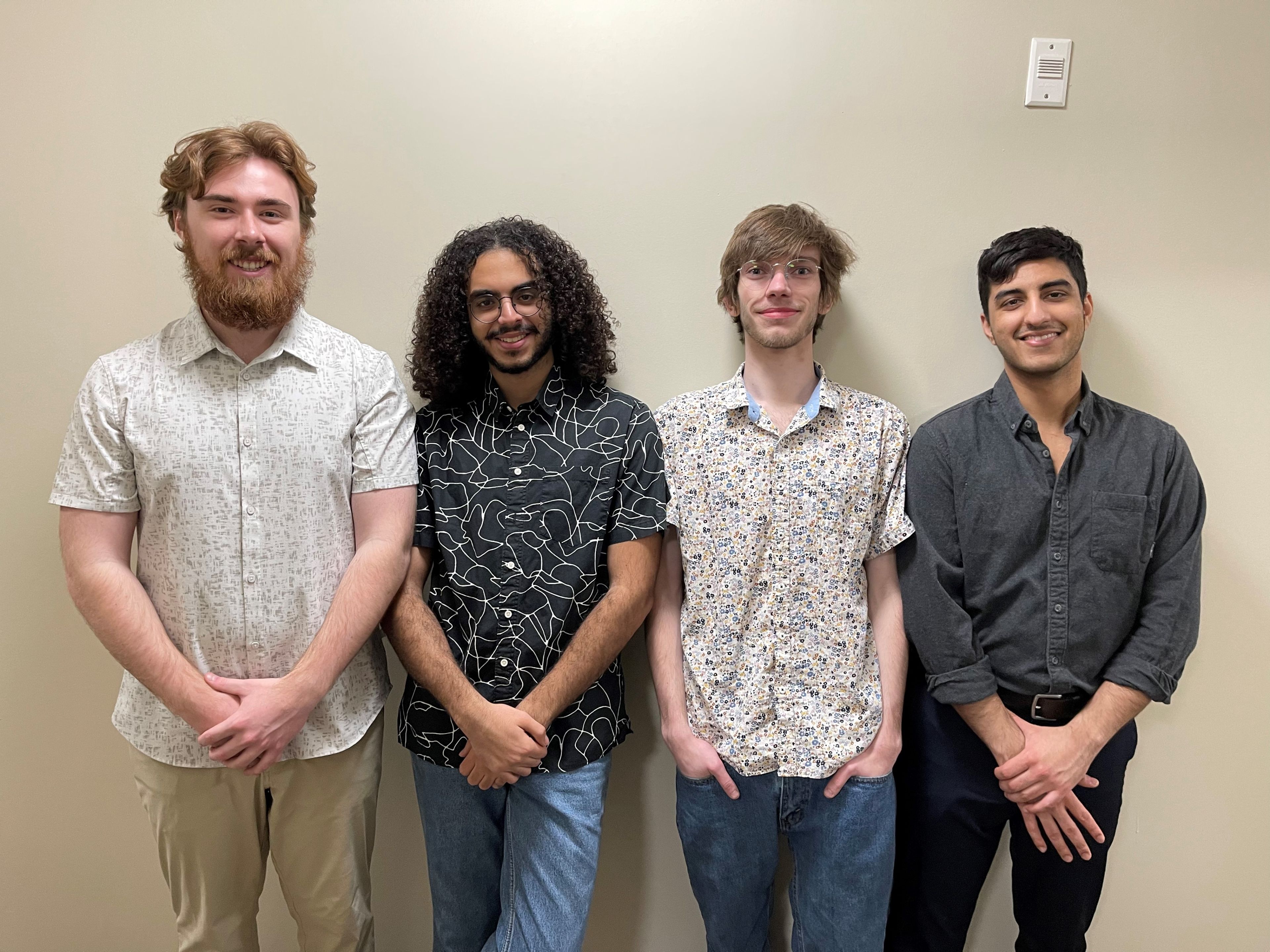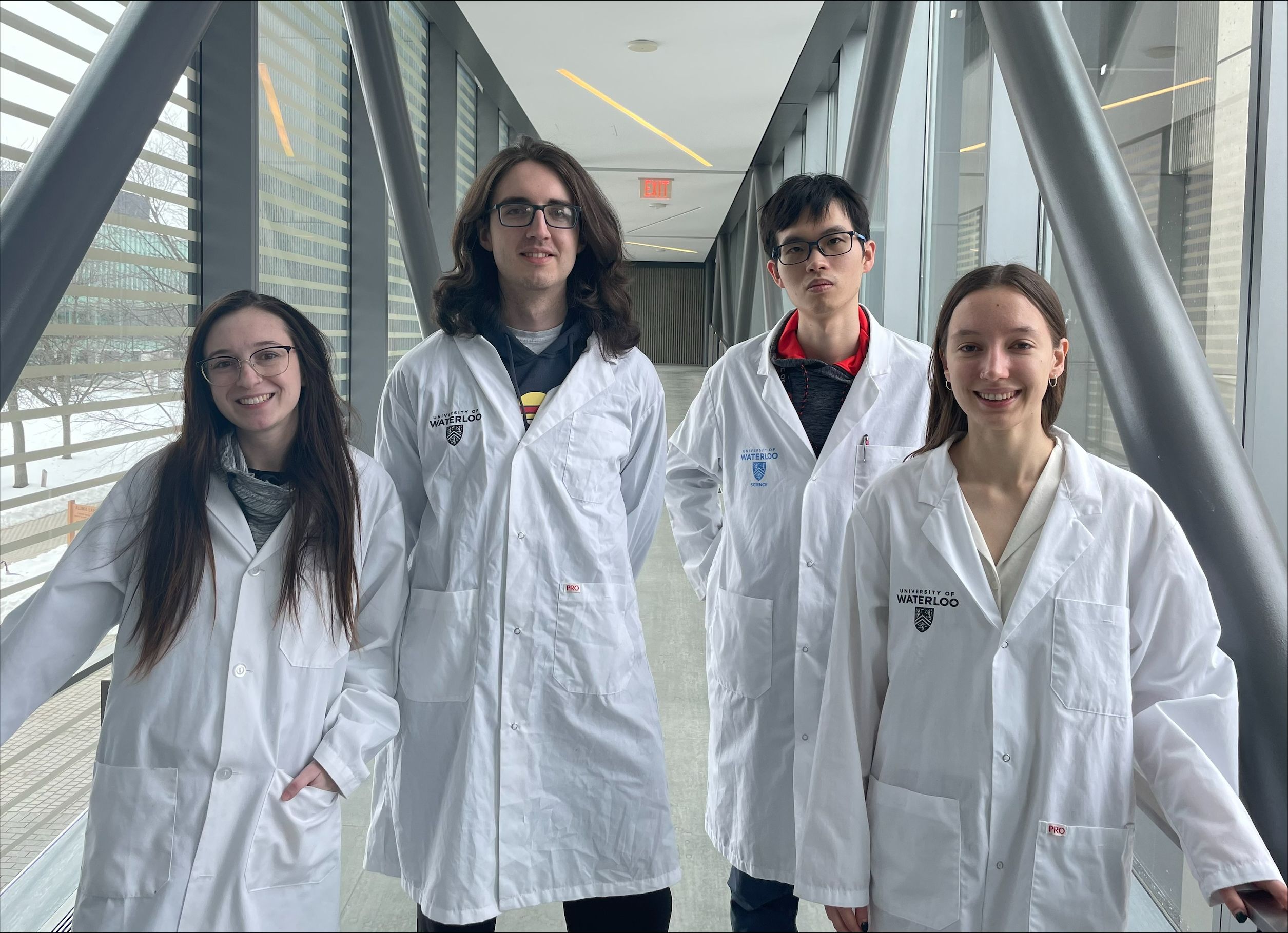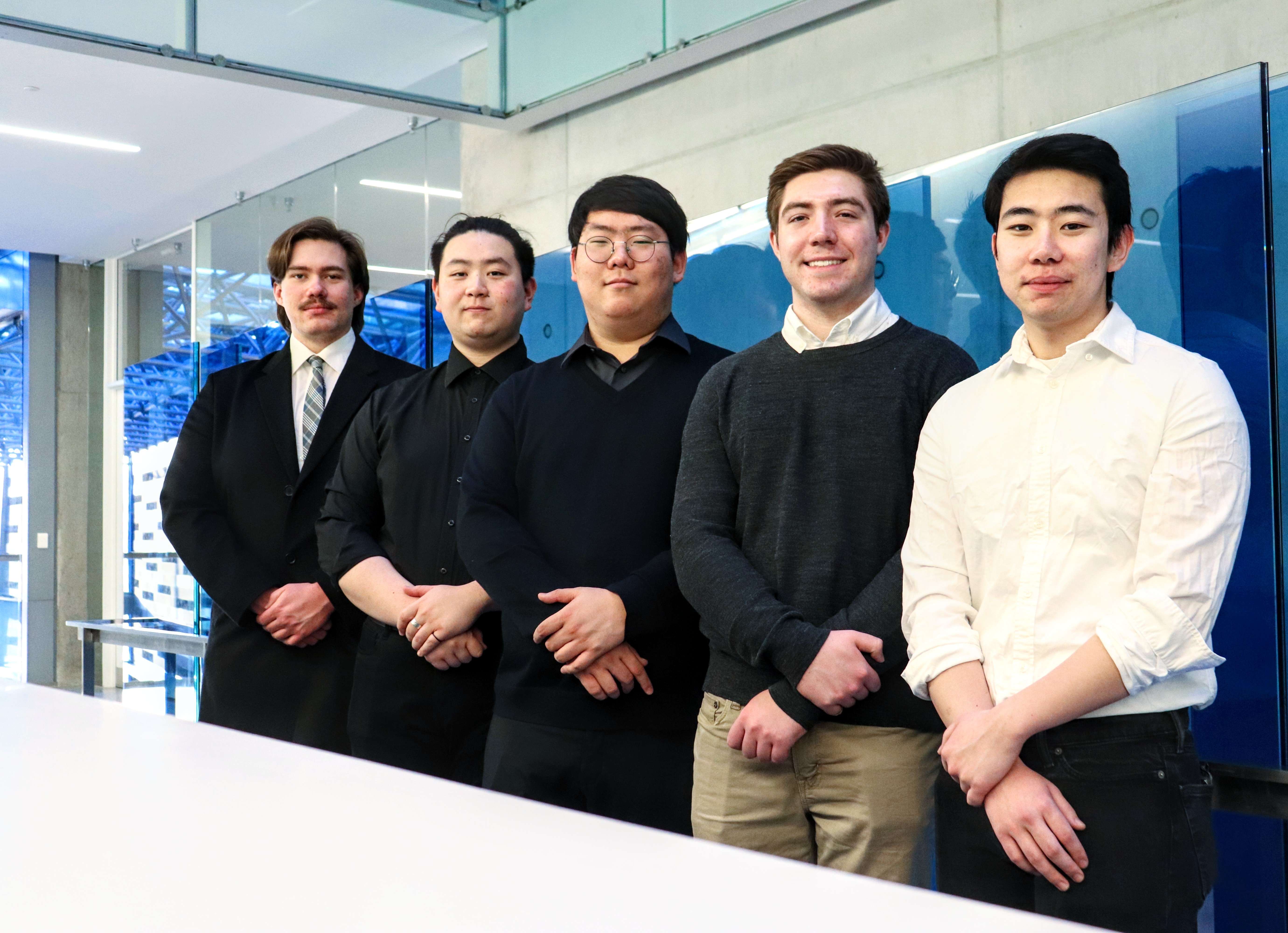CAPSTONE DESIGN PARTICIPANTS

Nick Gharabaghi, Jacob Maurice, Michael Spinazze, Raj Zala
Triboelectric Nanogenerators for Energy Generation from Rainfall
15
Using rainfall to generate renewable energy is the foundation of well-developed technologies like hydroelectric dams, but there is a market for technology that can do this on a smaller scale, without requiring dedicated infrastructure. To address this, we have designed a nanogenerator product that takes the mechanical energy of falling raindrops and converts it to electricity using the triboelectric effect. Our device consists of a layered, flexible structure, with an insulating polymer surface on top of a conductive layer. The product is engineered to be thin and transparent, facilitating its seamless integration onto existing surfaces.
Consultant: Dr. William Wong

Karim Habashy, Patrick Hafenberg, Ian Ross, Agosh Saini
Magnetically Controlled Scalable Micro-Robots
16
Our FYDP explores a novel approach to electromagnetic control of arbitrarily small magnetic actuators within a predefined arena. Computer-controlled solenoids positioned outside the arena control a magnetic field with up to five degrees freedom– two greater than existing designs. Power requirements for our system scale linearly with arena radius, permitting the large work envelope needed for certain fields such as minimally invasive surgery in future designs. Our actuators consist of a large diamagnet bound to a smaller paramagnet. Within the arena, they form a stable assembly that can be intuitively manipulated, a feat impossible for current SPION-based designs.
Consultant: Dr. Hamed Shahsavan

Henry Hung, Brandon Klassen, Claire Murphy, Lauren Prophet
Cellect: Sanitary Product Filter Matrix for Passive Separation of Cells for Menstrual Fluid Diagnostics
17
Diagnosing HPV is a crucial step in identifying and preventing cervical cancer. Our project improves the efficiency and sensitivity of HPV testing on self collected samples of menstrual blood. Our device uses a passive cell separation filter coupled with a custom silica layer to segregate menstrual cells by size and purify their DNA. This streamlines the DNA retrieval process in the lab and allows for the collection of highly pure cervical cell DNA, which can then be used to diagnose HPV. This device has the potential to improve patient comfort and HPV testing accessibility, thereby improving cervical cancer outcomes.
Consultant: Dr. Aiping Yu

William Gao, Paul Park, Nicholas Pfeifle, Benjamin Shaw, Zi Zhang
QSense - Quantum Dot sensor for copper ion detection in water
18
Copper ions in water have been posing significant safety issues in many industries such as mining and aquaculture. However, current technologies either lack accurate numerical reading, or require extensive knowledge and equipment. Under specific chemistry, quantum dots give off different intensity of fluorescence under UV radiation based on the amount of targeted metal. This capstone project utilises that unique property in a handheld sensor system to provide a precise numerical concentration of copper ions in water within minutes. This system provides precise measurements without requiring elaborate operational knowledge and complicated equipment.
Consultant: Dr. Juewen Liu